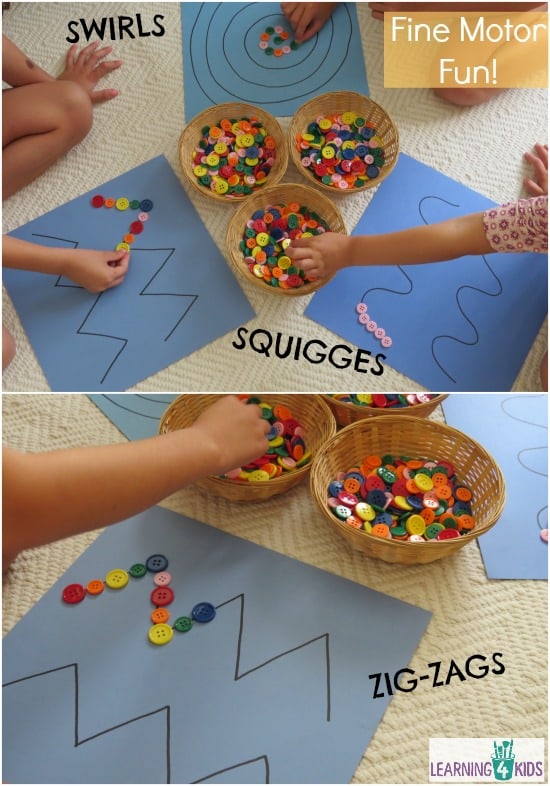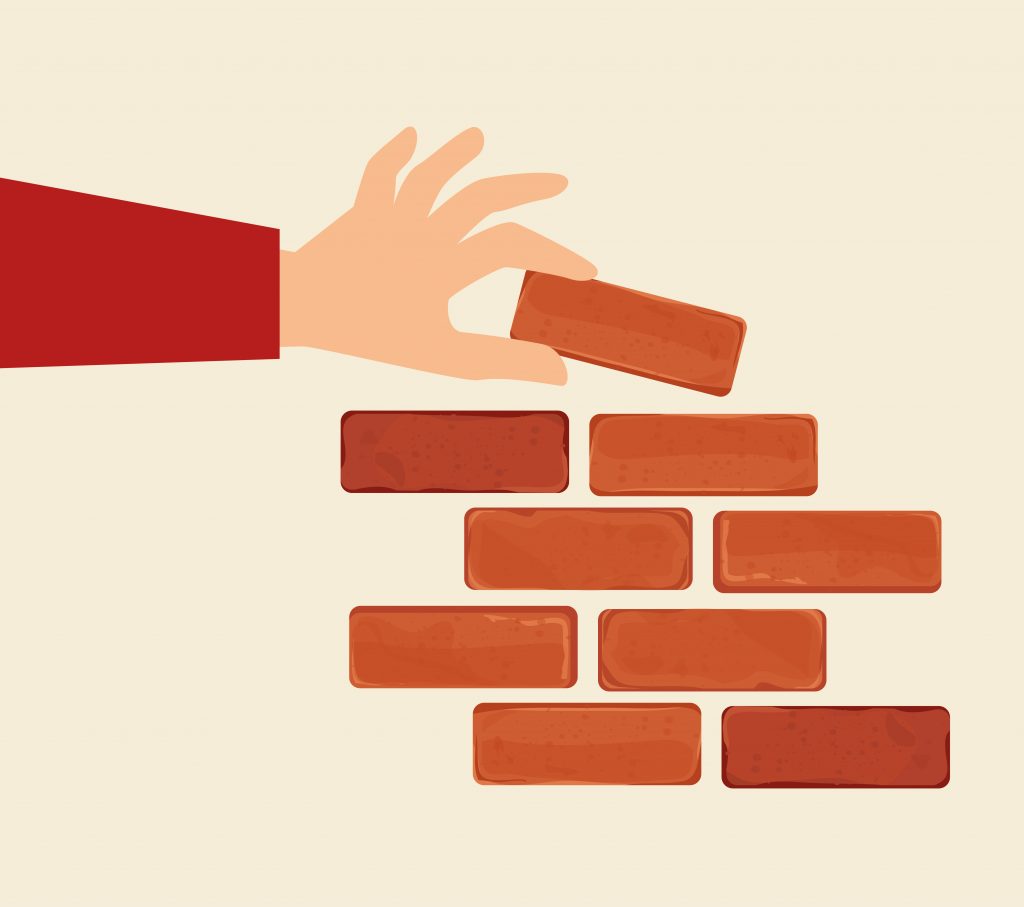
Developing Sorting & Patterning Skills
Head of Pre-primary
G Haux
Sorting and patterning are two skills children are exposed to in many every day ways. From sorting toys as children clean up, to observing and representing patterns at pre-school. These skills involve understanding relationships among sets, how the sets are represented, and analysis of the sets. Sorting and patterning skills are important as they help children understand the nature of mathematics. Like all other maths skills, sorting and patterning skills develop knowledge of sequences.
Here are some ideas for the different stages of pattern skills.
Stage 1: Recognize a pattern.
Colour patterns are everywhere, and your child probably loves to spot them. Point out patterns on your child’s clothing or Legos and coloured blocks: red-blue-yellow-red-blue-yellow. Your child may love drawing rainbows, which follow a colour sequence; help them notice this and follow the sequence.
Stage 2: Describe a pattern.
Let them describe in words what they see. “Look, you have stripes on today! Red, blue, red, blue.”
Below is a simple progression which can be applied:
ABAB (red, blue, red, blue); ABC (car, truck, plane, car, truck, plane); AABB (crayon, crayon, pencil, pencil, crayon, crayon, pencil, pencil)
Stage 3: Copy a pattern.
Make a pattern with toys or make a pattern by doing something. “Let’s make a movement pattern. Jump. Step. Jump. Step.” Make a sound pattern with rhythm instruments. Bang, tap, tap, Bang, tap, tap. Create patterns with objects you find in nature.
Stage 4: Extend a pattern.
Make patterns using snack food- peanut, raisin, peanut, raisin. The ideas are endless. The object being to continue the pattern without a visual sample to follow.
Stage 5: Create a pattern.
The more children become aware of patterns, the easier it is to create their own.
When children have solid patterning skills in place, they can predict what will come next. Since math is all about rules and systems, lots of practice and exploration in these skills is a really great thing for those developing minds!
Sources: https://www.pre-kpages.com/patterns/
https://thekindergartenconnection.com/secrets-developing-sorting-patterning-skills
https://www.themeasuredmom.com/simple-ways-teach-patterns-preschoolers/

Work for home
Head of Foundation Phase
L Stegen
What is homework?
Homework can be defined as tasks assigned to learners by teachers, which are meant to be carried out during non-school hours. However, homework can mean much more this. It can become a window through which parents can observe their children’s education, as well as an opportunity for schools to let parents know what their children are learning.
The purpose of homework is to provide the learner with opportunities to practice the material already taught in class and to help the learner apply the skills learned to different contexts. Homework might also introduce stimulating activities that prepare the learner for new work. Most importantly, good habits and academic discipline are developed at an early age to prepare the learner for later study.
The teacher tries to ensure that the homework is relevant to the learner’s current learning objectives, appropriate to the learner’s ability and assigned on a regular basis. Care is taken not to overload the learner, but rather to develop achievement motivation by developing study habits that encourage learning.
A further aspect to homework, is to provide opportunities for parents to participate in their children’s learning as a way of bonding with them. The role of parents is crucial in making homework meaningful, as studies have shown that parental interest and support is vital in ensuring their children’s success in school.
Parents support their children correctly by:
Providing the space and material needed
Making rules about when, where or how homework is to be done
Interacting with teachers concerning instructions and other information
Responding to questions about homework
Not doing the homework for their children, but rather facilitating it
Monitoring the completion of homework
If homework is thoughtfully prepared by teachers and correctly supervised by parents, it becomes a meaningful tool in shaping and preparing the learner for future success.
As Foundation Phase teachers we notice that the progress of children who faithfully do homework under supervision is better than others. This was obvious during the challenging 2020 academic year. Parents are ultimately the ones who benefit as the child learns to take responsibility of homework.
Sources: Misheck Ndebele Homework in the Foundation Phase: Perceptions of principals of eight primary schools in Johannesburg
South African Journal of Education Volume 38 number 2,2018
http://www.scielo.org.za

Gamification
Head of Intermediate Phase
E Gouws
Play is our brain’s favourite way of learning.
Diane Ackerman
Playing games is the first method children use to explore higher order thinking skills associated with creating, evaluating, analysing and applying new knowledge. Games are highly motivational tools that almost all learners respond to.
The gamification of learning is an educational approach to motivate children to learn by using game design and elements such as storytelling, problem-solving, aesthetics, rules, collaboration (teamwork), competition, reward systems, feedback, and learning through trial and error. The gamification theory is that learners learn best when they are also having fun and while having fun, games help children focus, build skills and absorb content.
Games are commonly structured for players to solve a problem – an essential skill needed for today and the future. Some games have a rich storyline that develop creativity and imagination in its players. Many games promote communication, cooperation and even competition amongst players.
Gamification means board, card, group, and digital games. All games assist in gamifying the educational platform. Scrabble, Upwords, Boggle, Scattergories, Taboo, Apples to Apples and Balderdash are board games suitable to develop English language skills.
Maths skills can be developed using a simple deck of cards in various and innovative ways e.g. Race to 100 (flip a card and add its value to your running total. First person to reach 100 without going over wins!), Go fishing (fish for card pairs that add up to 10), and there are many others. Ligretto, Skip-Bo, Phase 10 are other number-related card games. 6 Nimmt! and QWIXX are Maths board games.
According to Albert Einstein, play is the highest form of research and it should therefore be part and parcel of every learning process in education.
Sources: https://www.trueeducationpartnerships.com/
The Power of Gamification in Education | Scott Hebert | TEDxUAlberta
https://study.com/academy/lesson/what-is-gamification-in-education-definition-research-strategies.html

Invest in sleep
Head of Senior Phase
D van Straten
Improving children’s test results and academic performance at school is often high on parents’ priority lists. Although there are few substitutes for hard work, well-developed organisational skills and effective study methods, an aspect that is sometimes overlooked is the amount, and quality of sleep our children get at night.
Yes… if your child is not getting enough sleep at night, it may negatively affect their academic performance at school.
Sleep occupies nearly one third of our lives, yet many people give little attention to it. Studies show that sleeping enough is not only beneficial to our health – helping our bodies regulate vital systems such as growth and immune response – but also aids memory retention.
In his studies, psychologist Herman Ebbinghaus found that people normally forget up to 40% of new material within twenty minutes. However, forgetfulness can be prevented through memory consolidation, a process of moving information from the short-term to the long-term memory, and this process is largely improved by a good night’s sleep. Taking this information to heart, one might ask: how much is enough?
According to Dr Abhinav Singh, Medical Director of the Indiana Sleep Centre, the National Sleep Foundation’s recommendations for nightly sleep are broken down into nine age groups. Below is a table with the recommended hours of sleep for school-going children:
Sources:
TED. Ideas worth spreading.
www.ted.com/talks/shai_marcu_the_benefits_of_a_good_night_s_sleep#t-231215
The sleep foundation
https://www.sleepfoundation.org/how-sleep-works/how-much-sleep-do-we-really-need

The motivation to endure
Head of FET
J Sibeko
Learning is influenced by motivations, and although learners are born with the natural ability to learn, much is dependent on the parents’ involvement.
Sometimes learners’ energy, drive, and enthusiasm for a subject or task may wane and therefore require continued reinforcement through external support. Parents are there to create a supportive environment that facilitates and increases learning as well as providing external support.
Nobody can inspire the learner as much as parents can. You might be a struggling learner from the word-go but anything is possible.
Learners’ enthusiasm is common, but endurance is rare. Learners who understand the relevance for learning a particular concept, and what learning implies for their everyday living, will generate interest.
Source: BU Journal of Graduate Studies in Education, Volume 9, Issue 1, 2017

Finding & fixing the gaps
Head of Academics
A du Preez
I marveled as I watched teachers joining an online staff meeting one by one. The meeting was due to take place close to midnight, and attendance was not compulsory. The topic: 2020 Matric results.
Of the very first teachers to join were those from our Pre-primary and Foundation Phase. Soon the rest of the staff followed – Intermediate Phase, Senior Phase, and of course FET. All had a finger in this pie. All had put in much love and effort into educating these Matriculants over the past thirteen or more years.
It is so much easier for a matric teacher to build on a good foundation. A good foundation is solid and strong with no gaps. It is in the Foundation Phase that the difference between d’s and b’s is achieved and where 61 and 16 become two different numbers with different values. All gaps, no matter how small, need to be found and fixed before the next brick in the wall can be laid.
This is the challenge every single teacher in every phase and grade faces – finding and fixing the gaps while teaching each individual child. Often, fixing the gap comes more easily than finding it.
Sometimes it takes a team to find the gap. A gap could become evident in a child’s simple question or of course in an error. In this regard, Pauline Smith warns, “In literacy learning situations, teachers frequently fix errors before helping children find errors. This can be a source of confusion for students, especially when they are experiencing difficulty or when a task is hazy.”
Furthermore, a concern raised by a parent could also reveal a gap. It could be anything that hinders the child varying from colour blindness to plain disobedience. Finding is important and precedes fixing.
Fixing too, requires the whole team: the willing learner, the supportive parent and the enthusiastic teacher. Together we patiently stitch up (because a stitch in time saves nine!) and plaster until the gap is gone and ready for the next brick and then the next… right to Matric.
And now all these years’ finding and fixing finally paid dividends with a 100% matric pass, as well as a 100% Bachelor Degree pass for our 2020 Matriculants! As a staff body we thank the Lord for His help, wisdom and care.
Sources: https://doi.org/10.18296/set.0444
